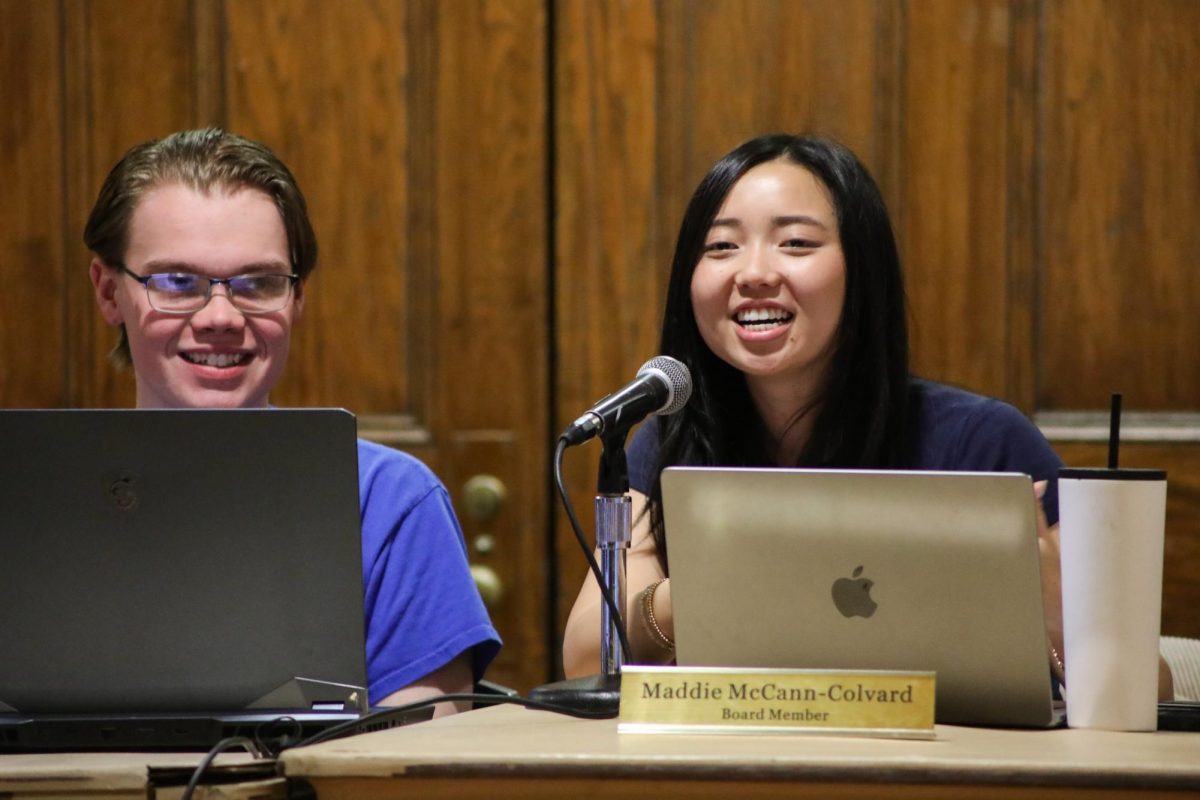Show me the money with real national heroes
March 18, 2005
Amid the fall of governments, the horrors of war and our seemingly meaningless existence,… Amid the fall of governments, the horrors of war and our seemingly meaningless existence, there is one thing that keeps us going.
Naturally, I’m talking about money.
The value of money is not what interests me, although I like the dollars, and I’m hoping someday they will like me.
Beyond the obvious “legal tender” aspect of currency, money gives nations a chance to show what they value culturally. How does a country decide what matters that much to them?
France had artists and composers appearing on their currency before the Euro. Russian bills show the great monuments of their cities. North Korea has industrial works and guns.
Apparently, this country values dead presidents.
After seeing a lot of different kinds of currency, I have determined that U.S. money is not only the most widely accepted money in the world, but also the ugliest.
We’re not the only country to put politicians on bills. China puts Mao Zedong on every note worth more than 50 cents. But variety and color set off almost all money, except ours.
We have the most popular money on Earth. We should show people we care about things other than our political leaders, and do so in an artistic way.
Therefore, like the MAC machine, I have “the new color of money” right here:
On the penny, we should have Frank Lloyd Wright, the architect who exemplified an international style of building. Benjamin Banneker, the black mathematician best known for designing Washington, D.C., should take over the nickel. Franklin D. Roosevelt should stay on the dime, and Thomas Jefferson should get bumped up to the quarter.
Also, John F. Kennedy keeps the half-dollar, and we give the dollar coin to Miles Davis. If you don’t know who he is, kneel before History of Jazz professor Dr. Nathan Davis and beg for mercy.
George Washington should stay on the dollar bill, because it wouldn’t be the same without him. Author and folklorist Zora Neale Hurston should take over the two-dollar bill, which we should really make more of. They’re the perfect tip, and they prevent your wallet from getting too fat with singles. The only problem is that cash registers would need a new drawer.
Abraham Lincoln should stay on the five, but since nine out of 10 people I’ve asked don’t know who is on the $10 bill, we should give the sawbuck to Jonas Salk, the doctor who saved a generation by developing the polio vaccine.
American military history dictates a soldier should appear somewhere, so I suggest George Marshall, the World War II general who knew not only how to fight an enemy, but also how to build an ally once the war was over.
In addition, Martin Luther King, Jr. appears on the fifty, and Benjamin Franklin keeps the hundred. On the larger bills, which no one except bankers and rich people ever see, less-noted yet still important people should be displayed.
Twentieth-century composer Aaron Copland, who fused American traditional music with classical styles, should appear on the $500 bill. The prolific explorers Lewis and Clark should jointly take over the thousand. On the $5,000 and $10,000 bills, teacher/astronaut Christa MacAuliffe and Ralph Ellison, one of the United States’ greatest authors, should be memorialized. Native American leader Crazy Horse should be on the $50,000 bill. Anything bigger than that would never be seen.
It’s tough distilling a nation into 17 representatives. This list is not perfect, but it’s a little broader than one limited to our founding fathers.
All these changes call for redesigning the backs of bills and coins to illustrate these people’s contributions to the United States, and using colors other than green. Vermillion and oxblood come to mind.
Also, while we’re at it, we can make U.S. money friendlier. Perhaps a cellophane number could be inserted into bills so blind people can tell what they are. And have you noticed that U.S. coins have not one single numeral on them? Non-English speakers can’t tell what they’re worth!
Thomas Jefferson once said our constitution should be rewritten every 20 years. If we can’t manage that kind of change, maybe we can manage to produce some money that’s more than green.
Send your ideas for new currency (along with your old currency) to Michael at realityfactory@yahoo.com.


